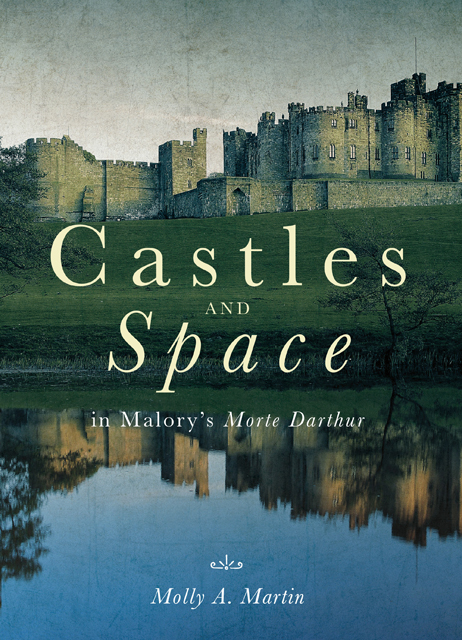Book contents
- Frontmatter
- Dedication
- Contents
- List of Plates
- Introduction: Into the Castle
- 1 Castles as Political Centers
- 2 Castles and Community Identity
- 3 Castles and Ritual
- 4 Castles and the Domestic Sphere
- 5 Castles as Prisons
- 6 Castles at War
- Afterword: Beyond the Castle Gate
- Bibliography
- Acknowledgements
- Index
- Arthurian Studies
Introduction: Into the Castle
Published online by Cambridge University Press: 20 January 2023
- Frontmatter
- Dedication
- Contents
- List of Plates
- Introduction: Into the Castle
- 1 Castles as Political Centers
- 2 Castles and Community Identity
- 3 Castles and Ritual
- 4 Castles and the Domestic Sphere
- 5 Castles as Prisons
- 6 Castles at War
- Afterword: Beyond the Castle Gate
- Bibliography
- Acknowledgements
- Index
- Arthurian Studies
Summary
This view of space as intrinsic to human activity is in contrast to our ‘educated error’ of seeing space as the background to objects, and so as the background to human behavior.
Bill HillierAll history, it has been said, is local history. Certainly the history of individual castles can often help to explain the great political events, and much of the history of medieval England, not to speak of Wales, is locked up in its castles.
R. Allen BrownCastles litter the landscape of Sir Thomas Malory’s Morte Darthur, as they did – and still do – England itself. As such, these architectural and geographical landmarks serve as a constant reminder of the royal, noble, and chivalric settings of the Arthurian story. However, castles are much more than locations or settings, although that is a role they fill with more importance – and even panache – than one might expect. For example, Arthur’s conception occurs after a breach in castle security; Launcelot breaks into and falls out of castles at crucial junctures in his relationship with Queen Gwenyver; and the schism between Launcelot and his king plays out on and around the walls of Joyus Garde and Benwick. Castles also provide the starting and ending points for many quests, which help define the knights of Arthur’s Round Table. Thus, they are both the launchpads and the confirmations of knightly endeavors. Furthermore, they are seats of power – political, military, economic, and so forth. They are prisons and prizes and keepers of ritual. Just as important, they are homes for many in the text. In these several capacities, these architectural structures function as representations just as much as they occupy the space of and become the physical backdrop to the Morte. Castles operate as both physical and symbolic entities in Malory’s text, and they create meaning and identity – both individual and communal – through the literal and figurative forces they exert.
Throughout the Morte, castles influence the characters who tread around and within their walls. As a physical, a symbolic, and a social space, the castle inflects the behaviors and identities that it frames. These social and structural functions even work in conjunction with each other at times to manipulate the identities and actions on the page, augmenting and even creating meaning.
- Type
- Chapter
- Information
- Castles and Space in Malory's Morte Darthur , pp. 1 - 22Publisher: Boydell & BrewerPrint publication year: 2019



